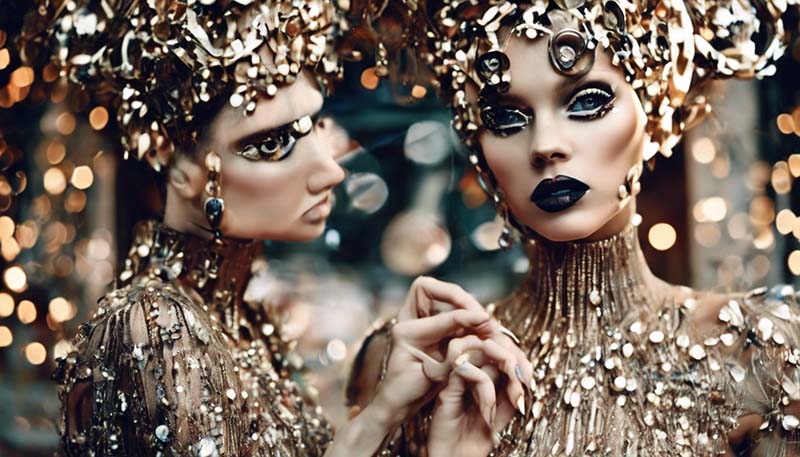The Craft of Couture: The Intricate World of High Fashion
The Craft of Couture: The Intricate World of High Fashion
The world of haute couture is a realm of unparalleled artistry and meticulous craftsmanship. It is an exclusive domain where fashion transcends mere clothing to become a wearable work of art. This article delves into the intricacies of haute couture, exploring the dedication, skill, and creativity that define this elite level of fashion.
Introduction: The Essence of Couture
Haute couture, a French term for high sewing or high dressmaking, is a protected appellation, created in 1858, that acknowledges the high standards and craftsmanship required of its creators. It is a prestigious title that denotes exclusivity, as only a select group of fashion houses are permitted to use the term officially, as recognized by the Fédération de la Haute Couture et de la Mode.
Couture is not just about designing clothes; it's about creating garments that are one-of-a-kind, often made to measure for individual clients. Each piece is a testament to the designer's vision and the atelier's skill, featuring intricate detailing, exceptional materials, and unparalleled fit.
History: The Evolution of Couture
From the Parisian salons of the 19th century to the modern runways of today, haute couture has a rich and storied history. It began with visionaries like Charles Frederick Worth, who established the first true haute couture house in the 1850s. Worth's approach to fashion was revolutionary; he was one of the first to present collections on live models and to understand the importance of the designer's name in fashion.
Advertisement
Over the decades, the likes of Coco Chanel, Christian Dior, and Hubert de Givenchy further shaped the couture landscape, each leaving an indelible mark with their distinctive styles and contributions to fashion history.
The Couture Process: From Sketch to Creation
The creation of a haute couture garment is a labor of love, requiring hundreds of hours of work. The process begins with the designer's vision, which is then translated into a sketch, followed by a toile—a mock-up version of the garment made from inexpensive fabric to check the silhouette and fit.
Once the design is finalized, the atelier's artisans begin the meticulous work of cutting, sewing, and embellishing the garment. This can involve anything from hand-sewn beadwork to delicate lacework and intricate embroidery. Each piece is a masterpiece of patience and precision.
Couture Techniques: The Art of Craftsmanship
Haute couture is renowned for its use of complex and highly specialized techniques. Here are just a few:
- Draping: The art of draping involves manipulating fabric directly on a mannequin to create a garment's shape and drape. It's a time-honored technique that allows for a fluid and natural silhouette.
- Silk Shading: This technique involves using layers of sheer silk to create a graduated color effect, often seen in evening gowns and wedding dresses.
- Beading and Embroidery: Hand-sewn beads, crystals, and embroidery add sparkle and dimension to a garment. This work is often outsourced to specialized artisans who may spend weeks or even months on a single piece.
- Pleating: From simple accordion pleats to intricate origami-like structures, pleating is a technique that can transform fabric into a dynamic, sculptural element of a design.
Modern Couture Designers: The Vanguard of Elegance
The modern landscape of haute couture is a blend of heritage houses and new visionaries. Names like Chanel, Dior, Givenchy, and Valentino continue to lead the charge, upholding the traditions of couture while pushing the boundaries of design and craftsmanship.
Emerging talents, such as Alexandre Vauthier, Giambattista Valli, and Iris van Herpen, are also making their mark, bringing fresh perspectives and innovative techniques to the world of couture.
Challenges and the Future of Couture
Haute couture faces numerous challenges in the 21st century, including the high costs associated with production, the limited client base, and the rise of ready-to-wear fashion that caters to a broader audience. However, the allure of couture lies in its ability to dream and to create without compromise, a fact that continues to captivate the world.
The future of haute couture may lie in its adaptability and its capacity to embrace new technologies and business models while maintaining its core values of craftsmanship and exclusivity.
Conclusion: The Timeless Allure of Couture
Haute couture is more than just fashion; it's a celebration of creativity, a showcase of unparalleled craftsmanship, and a testament to the enduring human desire to create the exceptional. As the world continues to evolve, the craft of couture will undoubtedly continue to captivate and inspire, remaining a beacon of artistic expression and a symbol of the finest in fashion.

 2024-07-04
2024-07-04 158 Comments
158 Comments